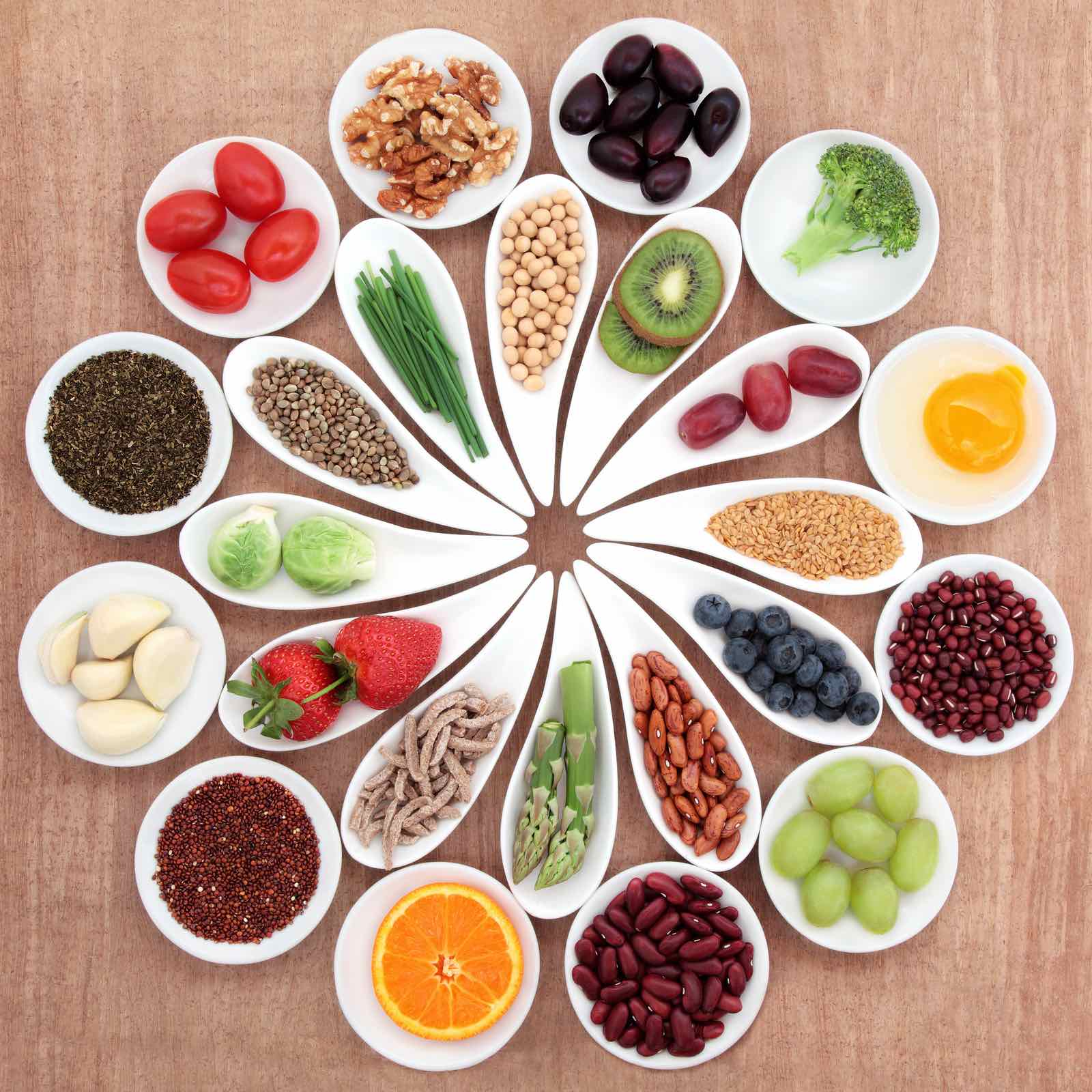In the ever-evolving landscape of health and wellness, the pursuit of a healthy weight often takes center stage. While exercise plays a vital role, a crucial factor often overlooked is portion control. This seemingly simple concept can dramatically influence our caloric intake, ultimately shaping our weight management journey. In this article, we will delve into the realm of portion control, equipping you with practical strategies and insights to navigate the world of healthy eating. We’ll explore the science behind this powerful tool, debunk common misconceptions, and reveal actionable tips to implement in your everyday life.
Mastering Portion Control: Simple Strategies for Healthy Eating

Understanding Portion Control: More Than Just Limiting Calories
Portion control is not merely about limiting calories; it’s about understanding how much food your body truly needs to function optimally. It involves mindful eating practices that help you recognize hunger and satiety cues, allowing you to enjoy your meals without overindulging. By mastering portion control, you can maintain a healthy weight, improve your relationship with food, reduce the risk of chronic diseases, and enjoy a diverse diet.
Maintaining a Healthy Weight
One of the primary benefits of mastering portion control is its impact on maintaining a healthy weight. Consuming fewer calories than you burn is essential for sustainable weight loss. However, this does not mean you have to deprive yourself of the foods you love. Portion control allows you to enjoy your favorite foods while still managing your caloric intake effectively. By learning to gauge appropriate serving sizes, you can create a balanced approach to eating that supports your weight loss goals.
Improving Your Relationship with Food
Many individuals struggle with emotional eating or mindless snacking, often leading to unhealthy habits. Portion control helps you develop a healthier relationship with food by encouraging you to listen to your body’s hunger signals. Instead of eating out of boredom or stress, you can learn to differentiate between true hunger and emotional triggers. This awareness fosters a more positive mindset around food, making it easier to make conscious choices that align with your health goals.
Reducing the Risk of Chronic Diseases
Overeating contributes to various chronic conditions such as obesity, heart disease, type 2 diabetes, and certain cancers. By practicing portion control, you can reduce your risk of developing these diseases. When you consume appropriate portions, you are less likely to exceed your daily caloric needs, which helps maintain a healthy weight and lowers the likelihood of associated health issues. Additionally, portion control encourages the consumption of nutrient-dense foods, further supporting overall health.
Enjoying a Diverse Diet
Another advantage of mastering portion control is the ability to enjoy a wide range of foods without feeling deprived. By being mindful of portion sizes, you can incorporate various food groups into your diet, ensuring you receive essential nutrients while satisfying your taste buds. This diversity not only keeps your meals interesting but also promotes a balanced intake of vitamins, minerals, and other nutrients necessary for optimal health.
Debunking Common Myths
As with any health-related topic, there are several myths surrounding portion control that can hinder progress. Understanding these misconceptions is essential for successfully implementing portion control strategies in your life.
Myth: Portion Control is Complicated and Restrictive
Many people believe that portion control requires strict rules and complicated calculations. However, this is far from the truth. Mastering portion control is about making conscious choices and gradually adopting healthier habits. It’s not about depriving yourself of your favorite foods; rather, it’s about understanding how to enjoy them in moderation. By focusing on balance and mindfulness, you can create a sustainable approach to eating that works for you.
Myth: I Need to Eat Less, Period
Another common misconception is that portion control means simply eating less food. While the quantity of food consumed is important, so is the quality. Opting for nutrient-dense foods that fill you up without excessive calories is key. For instance, choosing whole grains, lean proteins, and plenty of fruits and vegetables can help you feel satisfied while still managing your caloric intake. It’s not just about eating less; it’s about making smarter choices.
Myth: Smaller Plates and Bowls are a Guaranteed Solution
While using smaller plates can be a helpful strategy for controlling portions, it can also trick your brain into feeling deprived. Focusing solely on plate size may lead to an unhealthy relationship with food if you become overly reliant on this method. Instead, prioritize understanding appropriate serving sizes and listening to your body’s hunger cues. This holistic approach will empower you to make better choices without feeling restricted.
Mastering the Art of Portion Control
To effectively master portion control, it’s essential to adopt practical strategies that can be easily integrated into your daily routine. Here are some actionable tips to help you navigate portion control successfully.
Reading Food Labels and Serving Sizes
Understanding serving sizes is crucial for effective portion control. Food labels provide valuable information about the recommended serving size, which may differ from what you typically consume. Familiarizing yourself with these serving sizes can help you make informed decisions when selecting foods. Keep in mind that many packaged foods contain multiple servings, so it’s essential to pay attention to the total caloric content and adjust your portions accordingly.
Measuring Your Portions
During the initial phase of transitioning to portion control, utilizing measuring cups and spoons can be beneficial for accuracy. This practice helps build awareness of how much you usually consume and reinforces the concept of appropriate serving sizes. Over time, you may find that you no longer need to measure everything, as you’ll develop a better understanding of portion sizes through experience.
Visualizing Your Portions
Visual cues can be powerful tools for portion control. Employ hand-size portioning methods for quick reference. For example, consider the following guidelines:
- One palm-sized serving of protein (meat, fish, tofu)
- One fist-sized serving of vegetables
- One cupped hand-sized serving of grains (rice, pasta)
- One thumb-sized serving of healthy fats (nuts, oils)
By using your hands as a guide, you can easily gauge portion sizes without needing to rely on measuring tools constantly.
Plating Up Your Meals Mindfully
When preparing your meals, aim to fill half your plate with vegetables, a quarter with protein, and another quarter with whole grains. This method not only promotes balanced nutrition but also helps control portion sizes. By prioritizing vegetables, you increase the volume of your meal while keeping calories in check. Additionally, colorful plates filled with a variety of foods can enhance the visual appeal of your meals, making them more enjoyable.
Focusing on Nutrient Density
Choosing nutrient-dense foods is a fundamental aspect of portion control. These foods are packed with vitamins, minerals, and fiber while being relatively low in calories. Incorporating fruits and vegetables into your meals provides essential nutrients without excessive caloric intake. Lean proteins, such as chicken, fish, beans, and lentils, offer satiety without added fats. Whole grains like brown rice, quinoa, and oatmeal provide sustained energy, while healthy fats from sources like avocados, nuts, and olive oil contribute to overall well-being.
Being Mindful of Your Hunger and Satiety
Listening to your body’s signals is a critical component of portion control. Pay attention to how your food makes you feel. Are you truly hungry, or are you eating out of boredom, stress, or thirst? Practicing mindfulness during meals can help you recognize these cues and prevent overeating. Before reaching for a snack, take a moment to assess your hunger level and determine whether you’re genuinely in need of nourishment.
Eating Slowly and Savoring Your Meals
In our fast-paced lives, it’s easy to rush through meals without fully appreciating them. However, giving your body time to register fullness is essential for effective portion control. Chew your food thoroughly and savor every bite. This practice not only enhances your enjoyment of the meal but also allows your brain to catch up with your stomach, reducing the likelihood of overeating.
Not Skipping Meals
Skipping meals can lead to increased hunger later in the day, resulting in overeating at subsequent meals. Regular meals help keep your blood sugar stable and prevent hunger pangs. Aim to eat balanced meals throughout the day to support your energy levels and maintain portion control. If you find yourself busy, consider packing healthy snacks to avoid impulsive choices when hunger strikes.
Planning Ahead
Preparation is key to successful portion control. Pack your lunch and snacks in advance to avoid impulsive choices that may lead to overeating. Preparing healthy meals and snacks ahead of time ensures you have nutritious options readily available, reducing the temptation to reach for unhealthy alternatives. Meal prepping can also save you time during the week, allowing you to focus on enjoying your meals rather than scrambling for food.
Being Patient and Kind to Yourself
Adjusting to portion control takes time and practice. It’s important to be patient with yourself during this process. Don’t beat yourself up for slip-ups; instead, celebrate small victories along the way. Focus on sustainable progress rather than striving for perfection. Remember that mastering portion control is a journey, and every step you take towards healthier eating habits is a positive one.
Beyond the Basics: Practical Tips for Everyday Eating
In addition to the foundational strategies discussed, there are several practical tips you can incorporate into your daily routine to enhance your portion control efforts.
Choosing Water Over Sugary Beverages
Hydration is essential for overall health, but sugary drinks contribute empty calories that can derail your weight loss efforts. Opt for water, herbal tea, or other low-calorie beverages to stay hydrated without adding unnecessary calories to your diet. If you crave flavor, consider infusing your water with fruits or herbs for a refreshing twist.
Limiting Processed Foods
Processed foods are often high in calories, unhealthy fats, and added sugars, making portion control more challenging. Focus on whole, minimally processed foods whenever possible. These foods tend to be more nutrient-dense and can help you feel fuller for longer, reducing the likelihood of overeating.
Portioning Out Snacks
When it comes to snacking, avoid eating directly from the bag or container. Instead, put a designated serving onto a plate or bowl. This practice helps you become more aware of how much you’re consuming and prevents mindless snacking. Consider pre-portioning snacks into individual containers for convenience, making it easier to grab a healthy option on the go.
Being Mindful of Restaurant Portions
Dining out can pose challenges for portion control, as restaurant portions are often larger than necessary. To combat this, consider asking for half orders, sharing meals with a dining partner, or boxing up half your meal for later. Being proactive about portion sizes when eating out can help you stay on track with your goals.
Embracing Mindful Dining
In our technology-driven world, distractions abound during mealtime. Make a conscious effort to disconnect from distractions such as your phone or television while eating. Focus on your food and the company you’re with, allowing yourself to fully engage in the dining experience. This mindfulness can enhance your enjoyment of the meal and promote healthier eating habits.

Portion control is a powerful tool for achieving a healthy weight, improving your relationship with food, and reducing your risk of chronic diseases. By understanding the science behind portion control, debunking common myths, and implementing practical strategies, you can overcome challenging eating habits and cultivate a healthier lifestyle. Remember, the journey to mastery is gradual. Embrace a mindset of progress over perfection, celebrate small victories, and be patient with yourself. You have the power to make sustainable, positive changes that will benefit your health and well-being for years to come.
